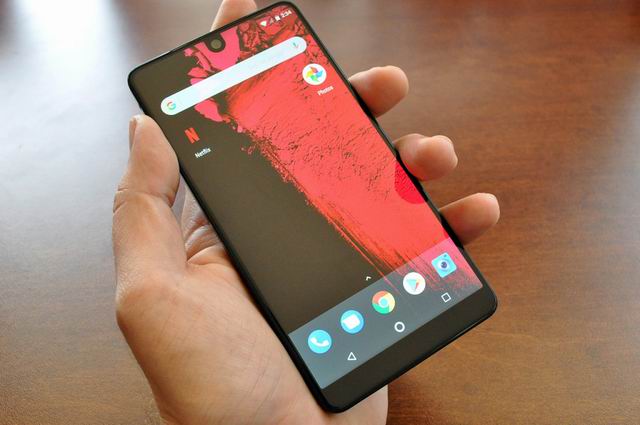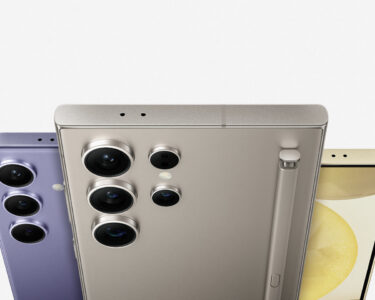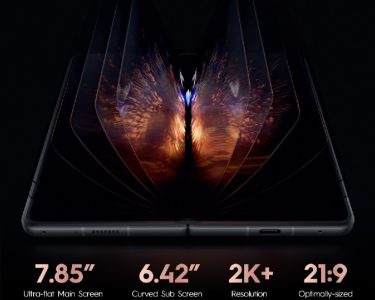It has been a hot minute since the mobile phone market seems to have reached a saturation with Google, Apple and Samsung being the three giants that grapple and tussle but remain constant. But Essential seems adamant to break this deadlock with a more consumer inclusive approach.
Essential’s launch party featured a series of three booths demonstrating the Essential Phone’s camera tech, design process, and hardware engineering respectively, and each was manned by the team that worked on the unit’s production.
The whole thing was unique to such gatherings usually because it’s far easier to hire a PR agent who might be thoroughly familiarized with the product and knows how to pull the attention. You almost never get to see the actual engineers who craft the device and can probably give you the most useful walkthrough.
Essential is a small company with no more than a 100 employees at best, so such presentation is a convenience for it. Partly also because Essential wants to shake up the monotony of customer-company interaction in a way that pushes their positive brand image and removes the middleman.
In the end, it all boils down to the question why the Essential products are a break through? They do not offer a feature that is not being hosted by any of the other companies. There is a certain divergence from the norm that people have come to expect from essential as the man behind the company is Andy Ruby who was on the team that built the Andriod and lead the project within Google for eight years.
So what is Essential Phone’s thing? Essential President Niccolo de Masi talked it out about how the company sees itself on par with Apple and Samsung. De Masi is the Executive Chairman Glu Mobile and the brains behind Essential’s market strategy.
“One of the things [Andy and I] have been talking about for years is how to build an emotional connection between the brand and the consumer. And Apple’s achieved that. I would say that in the Android ecosystem that hasn’t really been achieved. Samsung’s kind of the ‘not-Apple’ demographic.”
De Masi thinks this is true for North America, Western Europe, and English-speaking markets since other brands have established themselves as “love marks” elsewhere. This leaves room in the North American market especially for a “pro-consumer brand” to gain an emotional foothold with consumers, he says.
Keeping Essential on cutting edge spectrum is very important for the company and it is committed to treating its lack of production capacity as a benefit rather than a weakness. Having to produce 2 million units rather than 200 million gives them the room to play around more, take risks and experiment with various materials. This is a chance that mega production companies like Apple can’t avail.
“The reality is you can’t make 200 million of these phones even if you wanted to because you can’t get the titanium ceramic,” explained de Masi. “What we’re doing is running the same trick against Apple and Samsung that Apple did against Nokia and BlackBerry exactly 10 or 11 years ago. That is to say, they know about titanium and ceramic, but you can’t rack and stack 2, 3, 4 hundred million devices and have massive profit margins if you work with them.”
This approach does not come with some risk because unlike tech giants Essential does not have another business line to fall back and a low production approach will need time to get a foundation to sustain on. De Masi countered that their company is being supported by people who are through with the monotony of the market share that Apple and Samsung have clung on to and eventually plans to move forth with it’s Home business which aims to simplify integrating technology with homes. He assured that they will “eventually supplement and even match its smartphone effort in terms of importance to Essential’s bottom line.”.
Essential’s strength does not rely on its phone as much it does on its philosophy. Eventually, it was the passionate explanation of the people who worked day in and night out to come up with their proud au courant features.
Xiaoyu Miao, who leads the Essential Phone’s camera development as the company’s head of optics and imaging. He explained the working mechanism of the mono tone and full-color sensors that remove stray specks and provide a better picture quality. What Essential wanted was something new, the problem was to be solved by thinking outside the box approach with tech that had to built on site.
Miao, who had to work with a less than 10 people on his team to achieve this is praise worthy. It is not the final form of the camera but it is every bit the innovation Essential demanded from Miao. As a result, the mono camera has one of the best black and white photograph from a mobile camera possible.
His minimalistic team was also able to come up with a 360 camera attachment and a software that allows it to stitch 210-degree photos with live previewing capabilities. They achieved all this in a miraculous short span of a year. In the future, Miao would like to make the 360 cameras inbuilt to pump us Essential’s chances to be made exclusive feature-popular in the market.
Essential VP of Design Dave Evans goes in depth into the body and design of the phone. Rubin wanted it to have a river stone look that’s easy to slip into the hand. Evans said the finished product was far from a river stone in looks it had gone through a thorough thought process and every inch they moved away from the polished river was many nights in the studio apart.
Product Designer Paulina Mustafa also took us along on the production line with her as the hardware engineer. She explained to us with excitement how the company pained over what materials to use. They considered the features of every material down to the structural features.
She then proceeded to smash her own Essential Phone against the table’s edge to show that no matter how many times she hit there was no visible damage to the casing.
Mustafa, Miao, and Evans were the front runners of Essential’s efforts to bring a pro-consumer approach into the lime light and they succeeded. The three of them, though excited and thrilled, narrated their part of the journey not as a professional commoditized but as the work force that spent night after night working in sync to pull this device out of their imagination and into our hands.
Essential wants to make noise in a quiet room that has settled to not treat start-ups as a competitor. They are obdurately trying to distinguish themselves, quite like the artisan-mass market divide. Essential’s approach is centered around painstakingly obsessing over minute details to produce a tech that is the best of their efforts. This paradigm is guiding their production, sourcing and marketing and media campaigns.
Time will surely reveal if this was worth their effort, they still have to determine what the valuable result they are looking for but as far as daring attention in a stalemate goes Essential is making bold statements.




